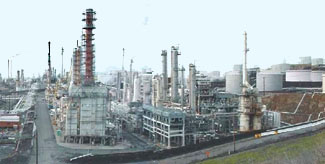Chromobacterium violaceum
Articles that lack this notice, including many Eduzendium ones, welcome your collaboration! |
Classification
Higher order taxa
DOMAIN-Eubacteria
PHYLUM-Proteobacteria
CLASS -Betaproteobacteria
ORDER -Neisseriales
FAMILY-Neisseriaceae
[Others may be used. Use Tree of Life link to find]
Species
Chromobacterium C. violaceum
Dear Dr. Denehy: I have trouble getting the image to show on here...
Description and significance
Describe the appearance, habitat, etc. of the organism, and why it is important enough to have its genome sequenced. Describe how and where it was isolated. Include a picture or two (with sources) if you can find them.
A gram-negative rod shape bacterium that produces violet pigment - hence the name violaceum - when grown in tryptic soy broth (Chen et al, 2002).
Usually found in soils and water of tropical and subtropical regions, with temperature around 20°C-37°C as its optimal temperature; and growth would be inhibited with temperature near or below 4°C (chen et al, 2002).
| Cellular Features | |
| Gram Stain | Negative |
| Shape | Sphere, Curved |
| Arrangement | Singles, Pairs, Chains |
| Endospores | N/A |
| Motility | Yes |
| Optimal Environment | |
| Salinity | N/A |
| Oxygen Req. | Facultative |
| Habitats | Multiple |
| Optimal Temp. | 25°C |
| Temp. Range | Mesophilic |
Above tables were borrowed from the following website: [[1]]
Genome structure
Describe the size and content of the genome. How many chromosomes? Circular or linear? Other interesting features? What is known about its sequence? Does it have any plasmids? Are they important to the organism's lifestyle?
Circular chromosome with a length of 4.8 Mbp, 123 RNAs. amd 4407 proteins
Genome Project > Chromobacterium violaceum ATCC 12472 project at LNCC, Brazil
Osbaldiston GW, Greve T, "Estimating adrenal cortical function in dogs with ACTH.", Cornell Vet, 1978 Jul;68(3):308-9
http://www.ncbi.nlm.nih.gov/sites/entrez
Cell structure and metabolism
Describe any interesting features and/or cell structures; how it gains energy; what important molecules it produces.
Ecology
Describe any interactions with other organisms (included eukaryotes), contributions to the environment, effect on environment, etc.
Pathology
How does this organism cause disease? Human, animal, plant hosts? Virulence factors, as well as patient symptoms.
Chromobacteria do not usually cause diseases in humans, the first C. violaceum infection reported was in 1927 from Malaysia, and approximately 150 cases reported worldwide, such as Asia, USA, Australia, and Africa (Martinez & Mattar, 2007).
C. violaceum usually enters hosts through injured wounds, skin lession, cervical abscess, or the pharynx (Chen et al, 2002).
| Pathogenic in | Disease |
|---|---|
| Human | Diarrhea and occasionally Septicemia |
Above table was taken from the following website:[[2]]
Application to Biotechnology
Does this organism produce any useful compounds or enzymes? What are they and how are they used?
M.S.P. Carepo et al. proposed the three operons in C. violaceum having pharmacological, biotechnological, and industrial properties. They are, the ars Operon, which gives rise to arsenic resistance to the baterium; cyn Operon, which is capable of cynate detoxification; and the hcn Operon that produces cyanse for biogenic production of cyanide, hcn also composed of an open reading frame (ORF) for acid dehalogenase.
Current Research
Enter summaries of the most recent research here--at least three required
Formation of Indole-3-Carboxylic Acid by Chromobacterium violaceum
Mouse and Human Cell Activation by N-dodecanoyl-DL-Homoserine Lactone, a Chromobacterium violaceum Autoinducer
The complete genome sequence of Chromobacterium violaceum reveals remarkable and exploitable bacterial adaptability
